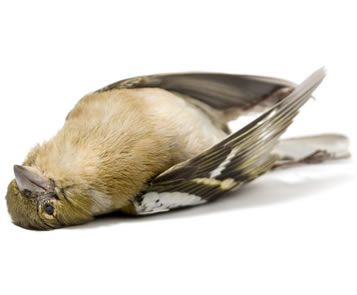





Cats
How to Get Rid of Cats Humanely
Whether you are interested in ridding feral cats from your property or participating in Trap, Neuter, and Release programs, Havahart® has a variety of solutions for their control - including feral cat traps, rescue kits, and animal repellents. Learn more by reading the step-by-step instructions below.

1 Eliminate Food and Shelter
Cats gravitate toward areas that provide food as well as warm, dry cover where they can take shelter. By eliminating any potential food sources on your property, you can make your home less inviting.
- Remove trash and secure garbage bins - human scraps are among the top food sources for feral cats.
- Clean up any leftover food, drinks or pet food.
- Avoid feeding cats or other wild animals on your property.
- Prohibit access to dry, covered spaces such as porches, sheds, garages and other structures.
TIP: Talk to your neighbors to ensure they are also taking precautions - one welcoming neighbor can lead to many feral cats around your property.

2 Identify Damage
Becoming familiar with the destructive habits of the cats in your yard and locating damage areas will help you select the most effective control method.
Common cat activities include:
- pilfering garbage
- using gardens as a litter box; digging up plants and seedlings
- urinating on your lawn; leaving brown, dead patches of grass
- mating/yowling in your yard
- spraying/urine-marking on vertical surfaces; leaving a pungent odor
- scratching tree bark
- nesting underneath your porch or other structures
- preying on birds

3 Know Your Cat Type
A cat in your yard may be stray, feral or a neighbor's pet that has been trained to wander outdoors. It's important to determine the type of cat you'd like to remove from your yard so that you can select an appropriate control method.
| Neighbor's Cat |
|
| Stray Cat |
|
| Feral Cat |
|
For more information, read Cat Facts »
4 Choose the Right Control Method
Once you've identified your cat's habits, damage areas and status as a stray, feral or pet, you can select the appropriate control method(s):
Live Cat Trap

A live cat trap is a great solution for capturing and caring for a stray or feral cat that lives in or frequents your yard. Some scenarios in which you may use a live trap include:
- You've identified the owner of a stray cat and wish to safely deliver it back home.
- You'd like to bring an unidentified stray cat to be adopted.
- You're interested in neutering a feral cat through a Trap-Neuter-Return program to help manage the feral cat population in your neighborhood.
For more trapping tips, read How to Trap a Cat »
Shop Traps »Cat Repellents

Pepper-based cat repellents are effective at irritating the senses of smell and taste of all types of cats, causing them to avoid protected areas. There are two application types:
- Granular repellents are sprinkled to create a repelling barrier around your lawn, gardens, and structures.
- Liquid repellents are sprayed directly onto surfaces like trees, garbage cans, trash bags, grass, flowerbeds and soil for more targeted protection.
The effectiveness of cat repellents depends heavily on their proper use and consistent reapplication - follow all directions carefully.
For more repelling tips, read How to Repel Cats »
Shop Repellents »Electronic Repellents

Electronic repellents repel approaching cats by frightening them with bursts of water. These eco-friendly devices can be used to condition neighborhood cats to stay away from various areas such as:
- vegetable gardens
- plants
- mulch beds
- pathways
- flowerbeds
- pool areas
- yards/lawns
- structures
- koi ponds
- entryways
- garbage cans
- trees
Electronics can control several cats at once and require far less maintenance than traditional cat repellents. They work great on their own or as additional protection against cats.
For more information, read Why Electronics »
Shop Electronic Repellents »Expert Tips
- Spraying and yowling are signs of un-fixed feral cats in your area. The best solution to decrease these nuisance habits is to participate in a local Trap-Neuter-Return program. Learn more here »
- Prevent cats from digging in your garden by covering the ground with rocks or sharp mulch, to which cats' paws are very sensitive.
- Keep cats out from underneath porches or other structures that may provide cover by covering openings with wire mesh fencing.
- Employ multiple cat control solutions for the most effective defense against cats in your yard.
